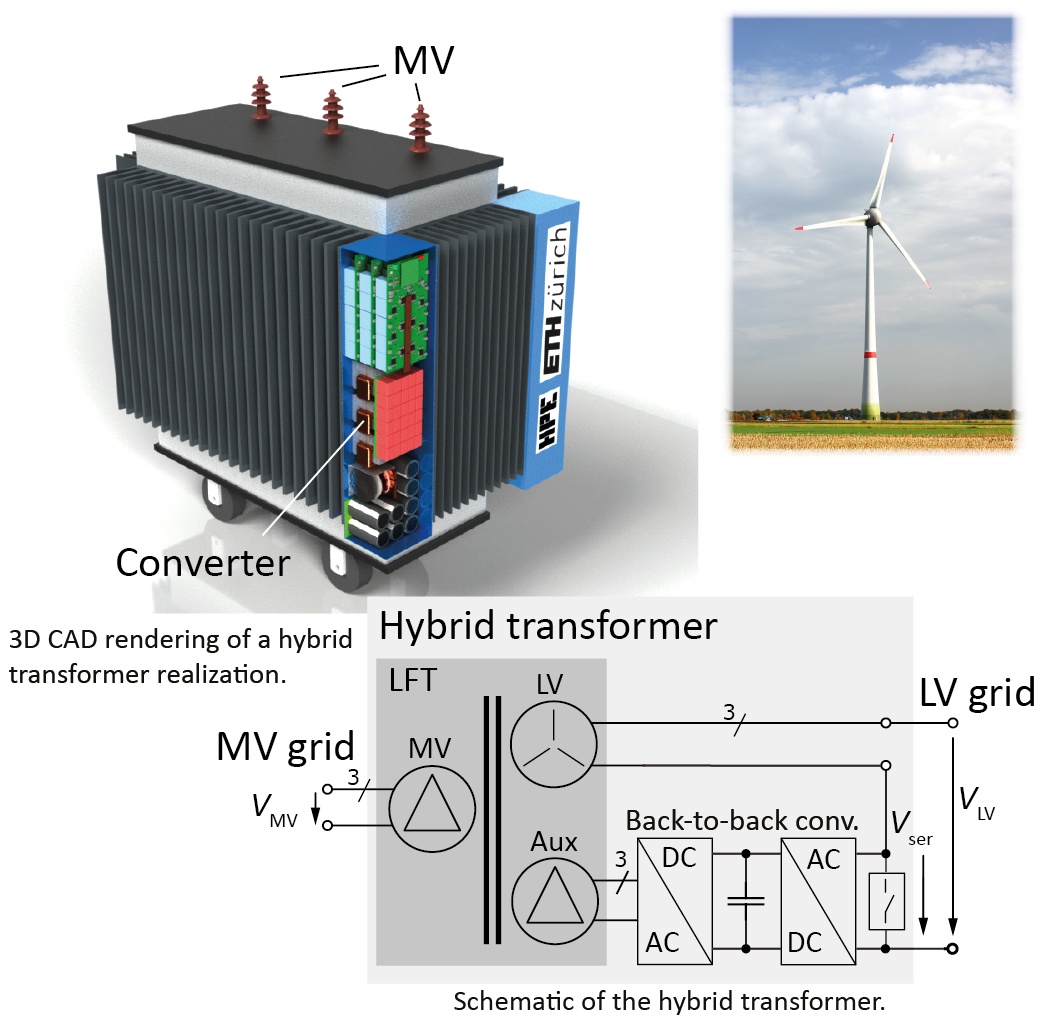The Hybrid Transformer - Towards a Smarter Grid
With the target to reduce CO2 emissions, conventional large scale power plants will be gradually replaced by distributed renewables. The increasing integration of these renewables entails power quality problems such as voltage fluctuations especially in the 400V low voltage distribution grid. New concepts as the hybrid transformer enable to maintain the desired power quality even with a high share of renewable generation.
In order to overcome the challenges arising from the integration of fluctuating renewables, the transition towards a smarter grid is required. Being an alternative to costly grid reinforcements or to limitations of the allowable renewable energy infeed, hybrid transformers can be employed in the future distribution grid as a smart replacement for conventional transformers. The hybrid transformer consists of a standard low frequency transformer and a fractionally rated power electronic converter. This allows to combine the high efficiency, high reliability and low cost of conventional transformers and the flexibility of the power electronic converter to greatly increase the controllability of the grid [1]. In addition to controlling the grid voltage, the current, the active and reactive power flow, the hybrid transformer can balance three-phase loads and actively filter harmonics. Furthermore, grid and transformer parameters can be monitored and transmitted to a central control station following the concept of Industry 4.0.
For the operation of the power electronic converter of the hybrid transformer, short circuits as well as lightning and switching transients are challenging due to the limited overvoltage and overcurrent capabilities of semiconductor devices. As a consequence, the protection concept is an essential part of the hybrid transformer and has a decisive influence on the converter design [2].
At the High Power Electronic Laboratory (HPE), the potentials and challenges of the hybrid transformer are investigated with respect to system efficiency, volume, and reliability taking into account protection and power quality requirements. To validate the functionality of the concept, a 100 kVA prototype including a 10 kVA converter based on the latest GaN technology is currently realized.
The ESC member involved in this project is Prof. Jürgen Biela, head of the Laboratory for High Power Electronic Systems (HPE).
The research at the HPE focusses on high power converter systems including operation at medium voltages required for example in future energy distribution for renewable energy sources or in traction applications. A further research focus is on solid state pulse modulator systems for medical applications or accelerators.
Further project information regarding the hybrid transformer is available: [1], [2]
